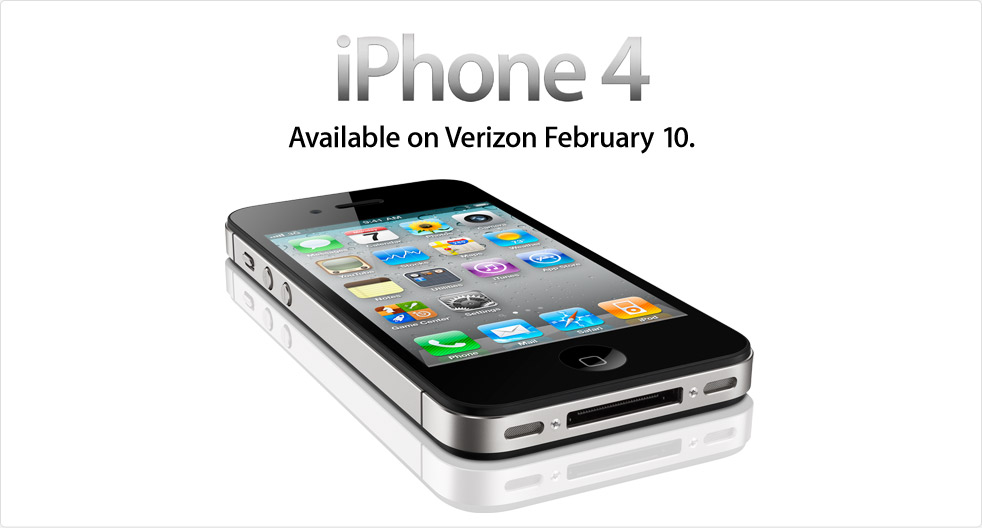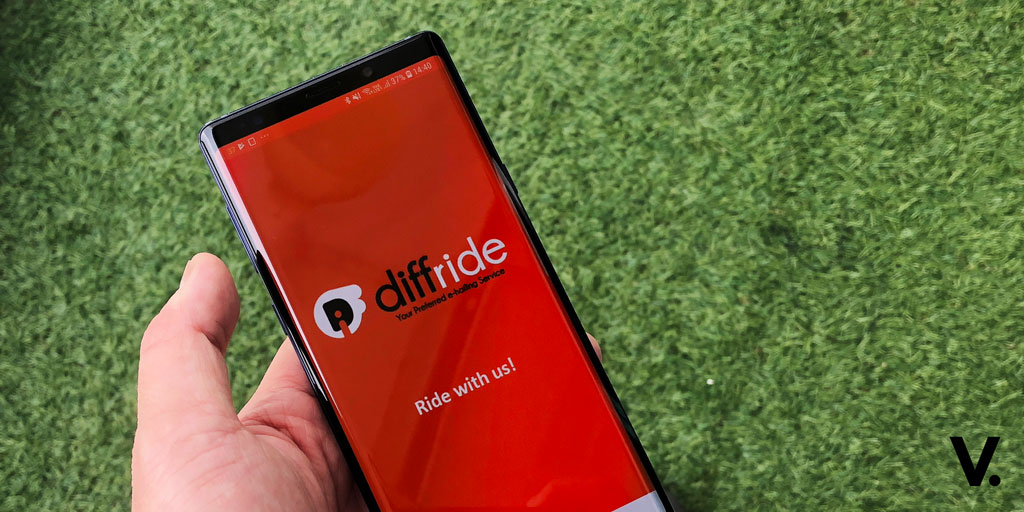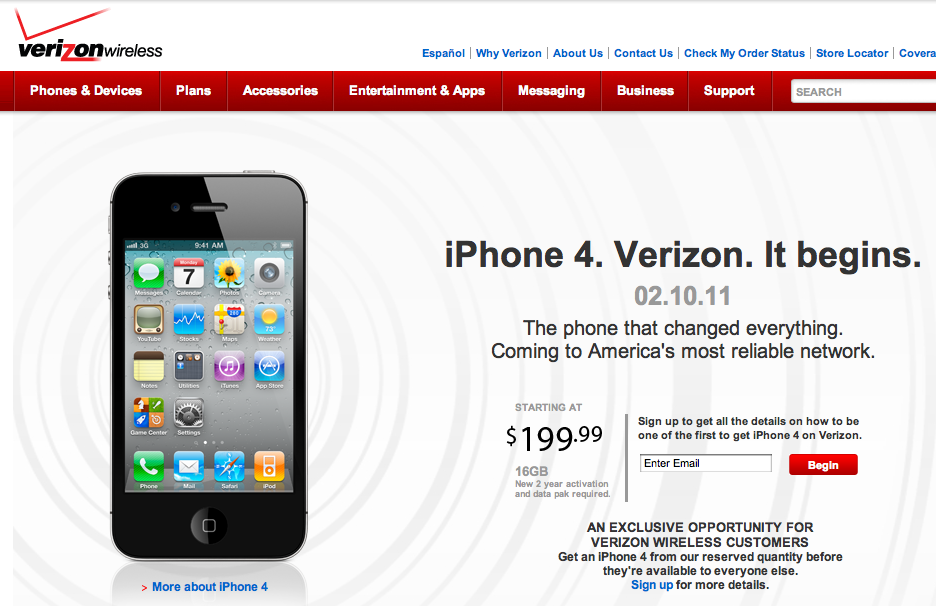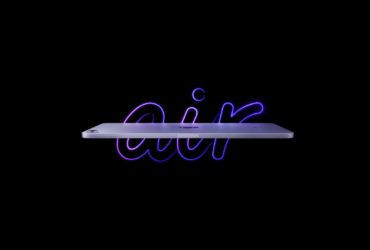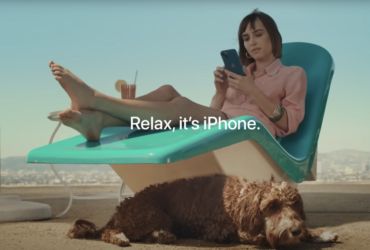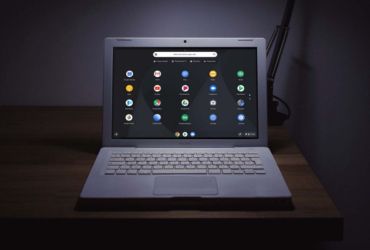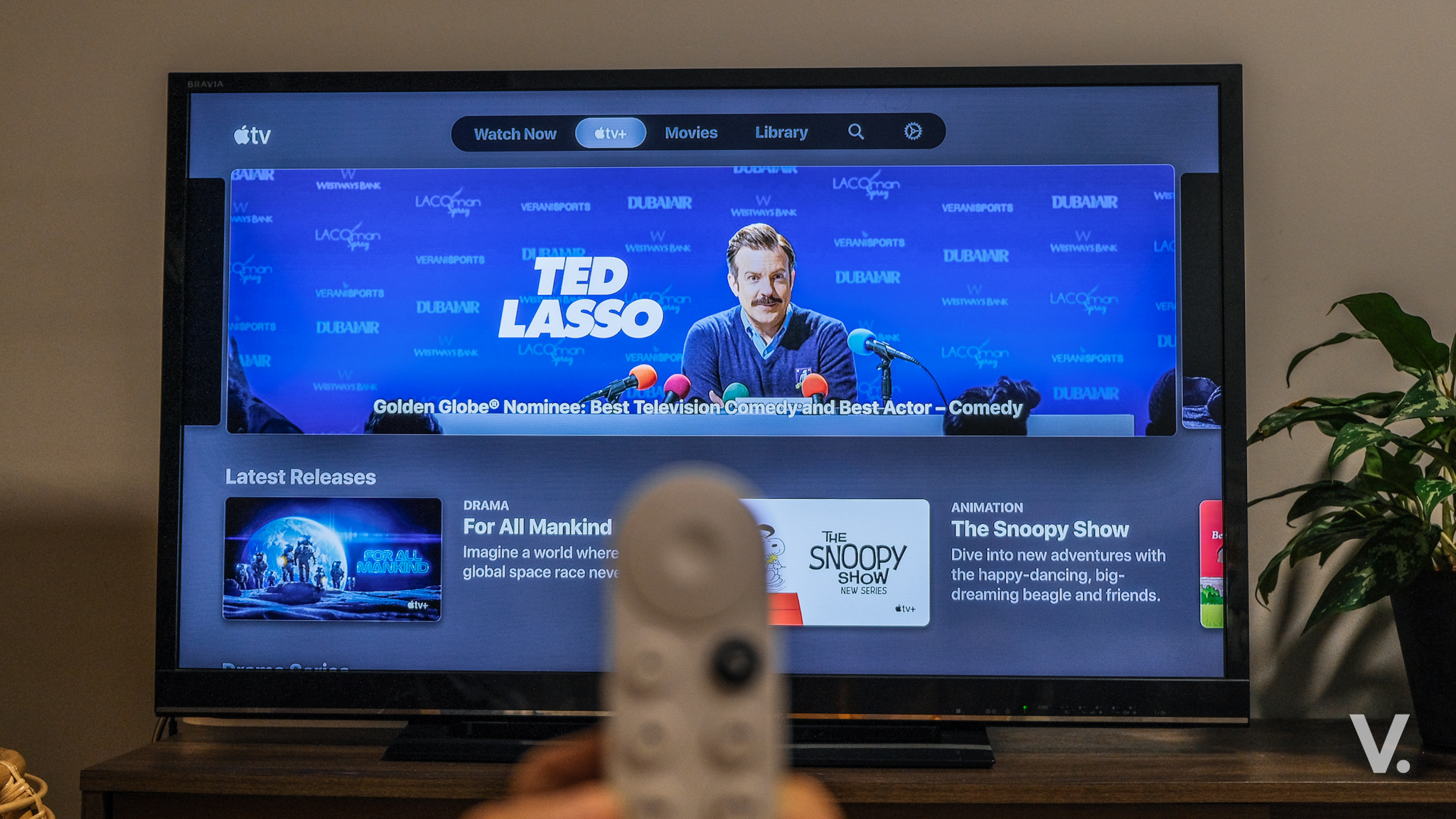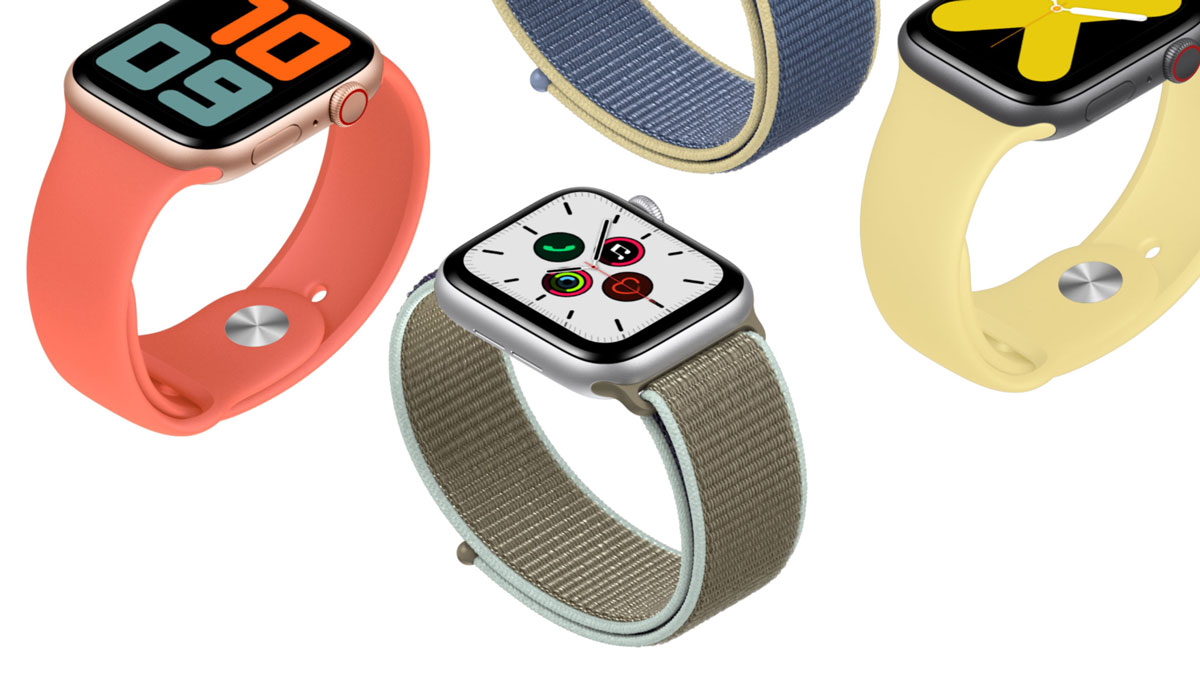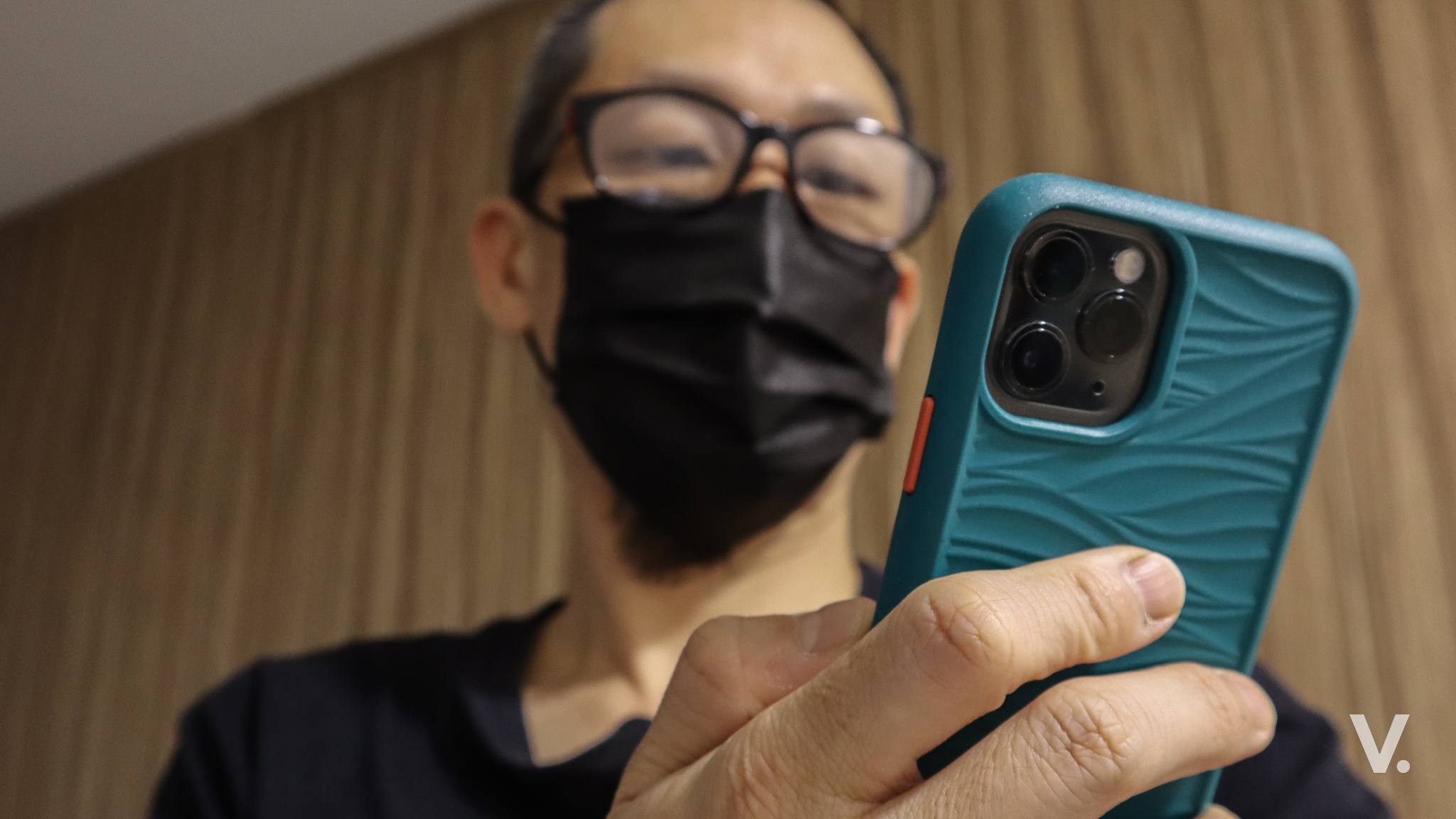Verizon iPhone. It’s Official.
The fruits of labour from over three years of collaboration have ripened. It’s here, it’s real. iPhone, meet Verizon. Here’s to (finally!) the end of AT&T‘s 3-year exclusivity with Apple, and a start of an era with a new friend. It’s been a subject of myriad rumors and much speculation over the years, only this time, the sources (in which case WSJ) were right, and sorry @theAndroidguy, you were dead wrong.
[ad#Google Adsense]
Non-exclusivity? Hah, big deal!
If it was in another country, this wouldn’t have been much of a deal, likewise in many European countries, where anti-monopolistic regulations are a norm. Likewise here in Malaysia where we have two carriers – Maxis and DiGi. The US is one of the rare exceptions, where there is an exclusive carrier. Many countries have multiple carriers for the iPhone.
As you would have known already, Verizon runs a different type of network from AT&T, something called CDMA, different from the more globally used GSM/UMTS (Global System for Mobile Communications). CDMA stands for code division multiple access. There are fundamental differences between GSM & CDMA. Mashable has insight on the differences between Verizon & AT&T network technologies. Verizon, the largest carrier in the US, is also rated the best carrier (AT&T, the worst) – known for its reliability and consistency, not necessarily for outright speed. Whilst AT&T can boast the latter, its unreliability and network quality issues has been a source of frustration for many, and also a reason for consumers to call out for a Verizon iPhone.
Antennae Gate, be gone!
Apple had to make slight changes to the antenna design of the iPhone 4 to make it to work on Verizon’s CDMA network. The CDMA iPhone has an additional notch on its antenna array. This addition alters the position of the mute and volume buttons on the side. Visually, you would be able to tell a Verizon from an AT&T. There are no other physical changes to the design apart from this. Verizon has confidently announced that it would not suffer any antenna gate “Death Grip” issues, due to better signal quality.
Verizon gets exclusivity, too.
With the CDMA iPhone, Verizon is introducing the ‘Personal Hotspot’ feature which enables the iPhone to be used as a WiFi hotspot, acting much like a MiFi device. It allows your 3G connection to be shared via WiFi to up to 5 devices simultaneously. Jailbroken iPhones have always had this ability, but now users get this feature right out of the box. No cables needed! Yippee. iPad users rejoice! Together with this feature is the introduction of the, first-time-ever to be seen on any iPhone, a pre-installed carrier app – Verizon 3G Mobile Hotspot. Eat that, AT&T. (they could easily enable this option for their customers to counter this, of course).
What we know
- The CDMA iPhone runs iOS 4.2.5.
- The phone is non-4G.
- Slight position changes to the mute and volume buttons means accessories manufacturers and vendors will need to quickly make alterations to designs to accommodate.
- No other features added.
- You cannot make calls and use data simultaneously, a limitation of CDMA. Verizon making modifications to the network to accommodate. Ready by end year.
- It’s not the end of the world for AT&T and/or Android.
- Verizon could sell 9-12 million phones this year.
- AT&T may lose 1.4 million customers to Verizon.
- 16GB costs $199 and 32GB at $299 on contract, and non-contract phones are $499 and $599 respectively.
- Phones will be available at all Verizon Wireless and Apple Stores, including online starting from February 10, preorders online start on Feb 3.
- iOS 4.3 will add WiFi hotspot feature to all other existing and future iPhones.
- Personal Hotspot isn’t free. Verizon charges $20 extra on most smartphone plans to enable Wi-Fi hotspot functionality, but throws in an additional 2GB of data transfer for you to use.
Final Thoughts
The introduction of the Verizon iPhone at this juncture has disrupted Apple’s traditional mobile product releases in summer (June/July). What this could mean is that it is highly likely that Apple will not introduce completely new hardware ala iPhone 5 this summer. An enhanced version of an iPhone 4 (iPhone 4S?) perhaps? One wonders also if Apple would be introducing upcoming models simultaneously on both networks. One thing’s for sure, there will not be a 4G LTE anytime soon, considering AT&T has not rolled out its LTE network yet and the fact that Apple is waiting for 4G radio chips to get small enough to fit their design requirements. That aside, in the international arena, GSM is widespread and popular. The Verizon iPhone, for the US market at least, will give consumers some choice. Will it cannibalise AT&T’s sales? Will it steal thunder from Verizon’s own Android 4G offerings? Will Verizon help Apple grab market share from the growing Android space? Time will tell. 2011 is going to be mighty interesting, that’s for sure. Rock on!
[ad#HTML]
[ad#Advertlets 336×280]


